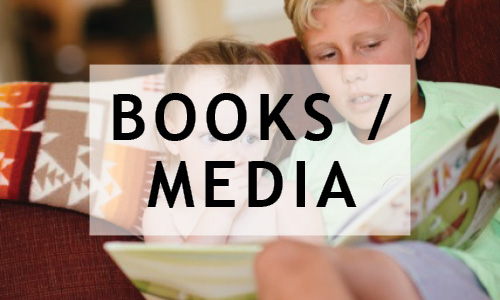From your newborn’s first cry, you are drawn into a lifelong conversation just between the two of you! Coos and babbles are the foundation for later language and all learning.
Although he can’t understand words yet, he is already recognizing the “rhythm” of the language he hears. A baby’s brain is naturally designed to learn language but his experiences greatly influence the actual language that he speaks, as well as how he speaks. Research shows that newborns can detect tiny differences in sounds, rhythms of foreign languages, voices, and recognize familiar speech patterns and speakers—all of this before they can understand a word!
Suddenly you have a little buddy tagging along on your daily activities, whether it be a trip to the grocery store or a walk into the next room. Whether it’s exciting or mundane, each new setting is an opportunity for language learning with new objects, actions and feelings to describe. Talk a lot to your baby, offering him a running commentary about what you are thinking, feeling and experiencing. Narrate your routines of getting dressed, gathering things for an outing, taking a ride in the car, changing diapers, or making a meal: “I am taking out the pot and filling it with water. Where is the pasta? Oh, it’s in the cupboard. I need to open the package and pour the pasta in the water. I hope the water doesn’t boil over the pot.” In addition to describing your experience, talk about what your baby is feeling, thinking and experiencing. “You love the beach! The sand feels warm and scratchy between your toes. You can hear the seagulls squawking in the sky.”
Quantity is important. A landmark study by researchers Risley and Hart found disparity in the amount of language children hear between groups of children 1-2 years old from three different socioeconomic groups. The greater the number of words children heard, the greater their scores at age three, such as IQ and vocabulary strength. These trends continued to be evident in the third grade. That being said, I would offer an aside. After speaking to a group of new mothers and encouraging them to talk a lot to their babies, I was approached by a mom who said, “I did what you said and talked to my baby about everything all day, and at the end of the day I was just exhausted!” I’ll bet her baby was exhausted, too.
Obviously, you and your baby need a break at times. Quiet times are important, too, as your baby learns through looking and listening, comparing and locating sounds and voices. As you read your baby, he will tell you he is engaged by his eye contact, smiles and body language. When he looks away or starts to get fussy, he has had enough. He is telling you to turn down the chat!
Engaging in a running commentary throughout your day comes naturally to some parents, and not to others. I enjoy talking to myself, others and even the dog, but I have encountered wonderful moms who are quieter by nature and have to consciously think about chatting with their babies. My neighbor, a psychotherapist who is raising three delightfully verbal daughters, recently admitted to me, “I knew when my girls were young it was important to talk to them a lot for their language development, but it didn’t come naturally for me. I am a good listener, so I had to remind myself to talk more.” She had to be intentional about being chatty.
Why is it important to talk to your baby? Because at this age, babies are listening to the shape and rhythm of language. Listening develops the language areas of their brain. Like little scientists, babies are deciphering patterns in language long before they understand words. On the basis of patterns of intonation, stress, and pitch, babies only two days old can distinguish the difference between their native language and a foreign tongue. In the same way, adults can recognize languages we don’t speak from their distinct rhythm.
Another study reveals that babies in utero hear differences in language before they are born. Newborns recognized The Cat in the Hat, which their mothers had read to them twice a day for the last six weeks of pregnancy, totaling about five hours of listening in the womb. After birth, the babies’ sucking response indicated a preference for The Cat in the Hat over another story. Babies recognized and preferred the story they had heard in the womb. I have heard from several parents who talked and read to their baby before birth. Maya’s dad had been speaking to her in utero, so when she was just a few minutes old, his familiar voice already soothed her.
Talking to your baby has social implications, too. When you look your baby in the eye and start up a conversation, you are acknowledging his uniqueness as a human being. His smiles and coos make you feel pretty important, too!



